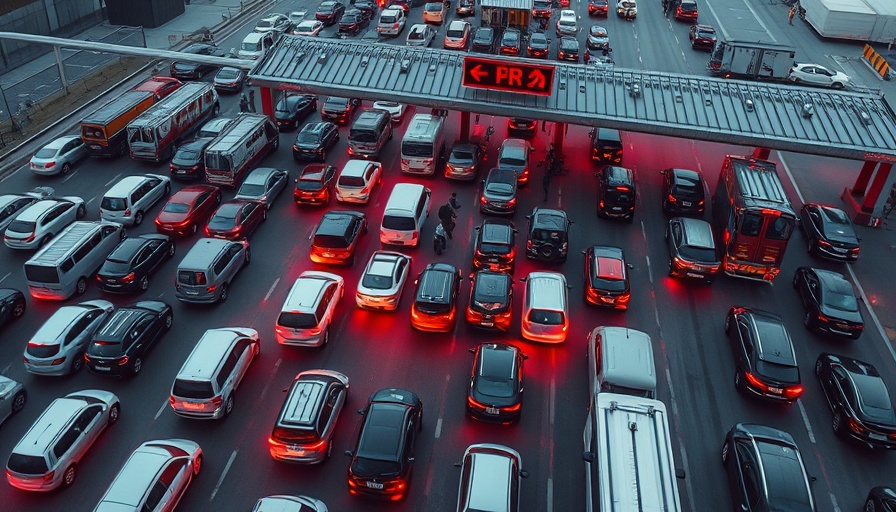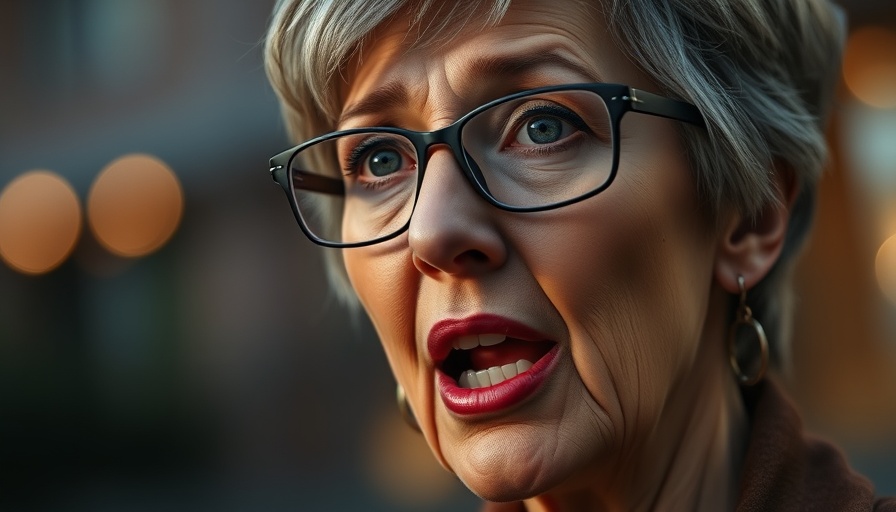
The Future of Face Recognition at Border Crossings
On May 9, 2025, a significant shift in border security was announced by U.S. Customs and Border Protection (CBP), as they plan to implement an extensive photographic system to document every individual exiting the country via vehicle. This system intends to capture the faces of passengers and match them against their official travel documents such as passports and visas. The initiative signals a new phase in national security, but raises important questions about privacy and the implications for travelers.
Understanding the Technology's Ambitions
CBP aims to expand its current facial recognition protocol, which already records individuals entering the U.S. by vehicle. By mirroring this approach for those exiting, the agency hopes to improve documentation of who is leaving the country. Notably, Jessica Turner, a spokesperson for CBP, revealed that the current system has enhanced their ability to biometrically confirm entry; a similar outbound tracking system is intended to similarly verify departures.
This effort is noteworthy against a backdrop of the Trump administration’s focus on self-deportation—a process whereby individuals voluntarily leave the U.S. CBP has not formally indicated the new photo system will track self-deportations, although the possibility remains open. With the growing number of individuals opting to exit the country willingly, the statistics generated through this system could provide valuable insights on immigration trends.
Privacy Implications in a Digital Age
As technology advances, so does the debate surrounding privacy rights, particularly in sensitive areas such as travel and immigration. The introduction of a comprehensive photographic monitoring system may provide greater security features, but it also risks infringing upon citizens' privacy rights. Data retention policies will undoubtedly need scrutiny; how long will these photos be kept, and who will have access to them?
The potential for misuse of such data is a critical concern. Should personal photographs be misused or improperly accessed, it could lead to public outrage and fear of surveillance. Protecting individual privacy while enhancing national security remains a complex balancing act that must be navigated carefully.
Technological Efficacy and Challenges
CBP has previously faced challenges in capturing all individuals in a vehicle, as evidenced by the results from a 152-day trial at the Anzalduas border crossing, where the system only achieved 61% accuracy in face-matching. For a system designed to enhance security, this raises questions about its reliability and effectiveness.
As the agency prepares to transition to this new level of monitoring, it will need to address these challenges head-on, potentially seeking technological partnerships with private companies that specialize in facial recognition. If properly executed, this system could enhance border security but will necessitate significant improvements in tracking capabilities.
Potential for Broader Applications Beyond Borders
The implications of facial recognition technology extend far beyond border exits. Its success could lead to broader application in different sectors, suggesting a future where biometric tracking becomes commonplace in various public contexts. However, such advancements must be complemented by stringent regulations to safeguard civil liberties.
Given the fast-paced nature of technological advancements, the societal impacts of these systems will likely evolve. Smart cities, enhanced surveillance, and data collection will demand ethical considerations that prioritize privacy while striving for improved public safety.
The Need for Transparent Policies
The introduction of such a robust photo tracking system underscores the need for transparency in governmental actions. Clear guidelines about the use of collected data, along with mechanisms for accountability, will be paramount. Legislative frameworks should be updated to reflect the realities of modern technology and protect individual rights in the face of advancing surveillance measures.
Engaging public discourse on these issues can lead to balanced legislation that considers both security needs and civil liberties. This includes soliciting opinions from privacy advocates, technological experts, and citizens to create a well-rounded approach.
Final Reflections on Border Security Innovations
As the potential implementation of facial recognition technology at exits unfolds, individuals must remain aware of how these systems affect their privacy and rights. Ensuring a future where technology serves the public interest—without compromising personal freedoms—is crucial.
The delicate interplay between security needs and civil liberties will define the landscape of U.S. border policies in the years to come. Engaging with these issues thoughtfully can pave the way for a more informed public and effective governance.
 Add Row
Add Row  Add
Add 




Write A Comment